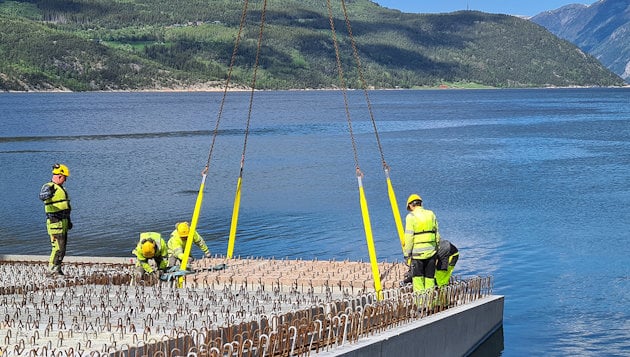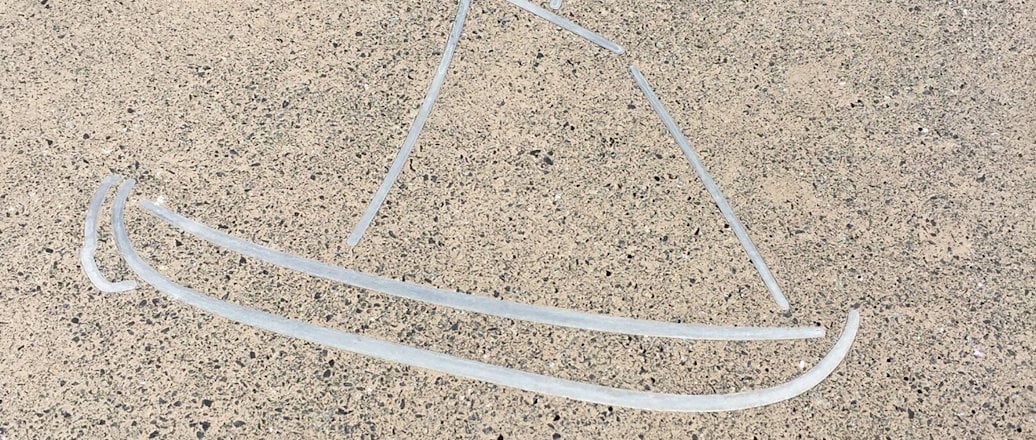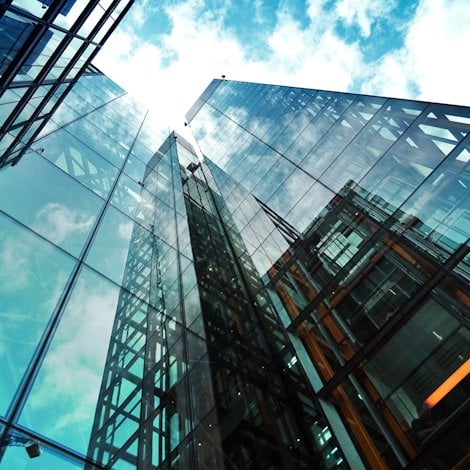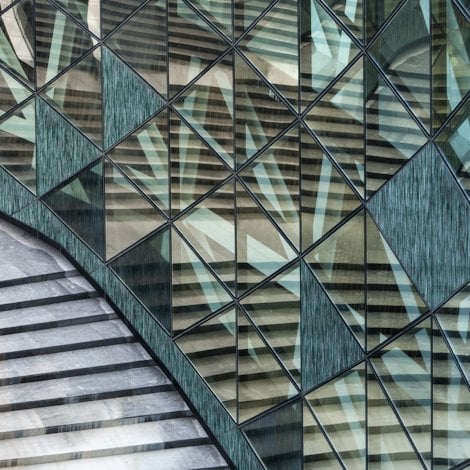Can aluminium-reinforced low-carbon concrete be the future?
The construction industry accounts for approximately 40% of the world's climate emissions. The industry can improve this picture by building with low-emission materials, with materials that can be recycled, and with materials that have a longer service life.
Concrete is the world’s most widely used building material. The Global Cement and Concrete Association reports that the global production of concrete in 2020 was 14 billion cubic meters. Concrete is mostly stone, but cement – the binder in the concrete – accounts for 80-90% of the emissions. Cement manufacturing releases CO2 in the atmosphere both directly, through the calcination process of the limestone, and indirectly, through the energy the process requires. As a result, cement manufacturing is responsible for 5-8% of global CO2 emissions.
The two biggest challenges associated with the use of concrete are its climate footprint and durability.
The research project Durable Aluminium Reinforced Environmentally-friendly Concrete Construction, or DARE2C for short, started in 2017 and is based on the idea that using aluminium as reinforcement results in durable concrete structures and enables the use of more environmentally friendly binders that lower the concrete’s carbon footprint considerably more than the low-carbon concretes currently available.
I joined the Research Council of Norway-supported project in January 2021 to fill the role as project manager. In 2020, my predecessor, Linda Therese Wiik, wrote about the properties of the DARE2C material, describing the sustainability advantages achieved by the concept.
The project is now in Phase 2 for maturing the concept and demonstrating for the industry that our concrete can be the low-carbon material they are looking to have.
Low-carbon concrete with aluminium compatibility
I’ve already pointed out that, in light of the world's climate challenge, the construction industry needs to reduce its CO2 emissions. The main approach to do so is to reduce the use of standard Portland cement. But the industry’s development of more environmentally friendly clay-substituted cements is hampered by the low alkalinity of these concretes not protecting the steel reinforcement.
Aluminium, on the other hand, cannot withstand the high pH of today’s commercially available concretes. The concept of DARE2C was therefore based on replacing a high amount (>50%) of the cement in the concrete with a binder like calcined clay, and thereby reducing the pH to <10 where aluminium is stable.
After five years of research and development, we have developed a low-carbon concrete that features solid mechanical properties and aluminium compatibility. We’ve identified several aluminium alloys as suitable for concrete reinforcement. The developed mixture constitutes an extraordinarily low-carbon concrete.
The concrete mix has not been commercialized, but from a theoretical perspective, calculations show that our new concrete can reduce CO2 emissions by 70% compared to concrete with 100% Portland Industrial Cement (CEM I).
Substituting aluminium for steel as reinforcement provides advantages
If not protected over time, steel will corrode in corrosive environments. Steel-reinforced concrete structures in such environments are therefore designed with increased concrete quality by increasing the cement quantity, as well as by increasing the thickness of the concrete cover to protect the steel from corroding. This means more use of materials and cement and thus even more emissions of CO2.
Aluminium has a natural surface layer of oxide and is stable toward the environment. Therefore, concrete cover can be reduced to just ensuring stress transfer (about 20 mm) or no coverage at all. This saves concrete volume, material usage and weight – all aspects which, together with the extraordinary concrete mix, reduce the footprint of the concrete structure.
Steel is three times as stiff as aluminium but weighs about three times as much. Aluminium, however, is easy to shape and can be cast or extruded and processed into geometries that provide adequate stiffness despite the lower E-modulus.
For construction types where the use of aluminum reinforcement is the right choice, the concept will provide lighter and more slender and elegant concrete constructions. In addition, the aluminium reinforcement – preferably low-carbon or recycled aluminium metal – can be used as a combination of structural and design elements. This ability to experiment with structurally and aesthetically different patterns of exposed reinforcements, and to integrate additional functions like letting the reinforcement flow out of the boundary of the structure without the need for traditional surface treatments, gives designers a new tool and new architectural possibilities.
Despite the obvious advantages, there are also technical challenges to be considered when designing such structures. One is the difference in the linear thermal expansion coefficient between the reinforcement in aluminium and the concrete. Through our project work, we see that the forces from the thermal expansion can be handled by anchoring and adhesion.
Durable and maintenance-free construction material
Aluminium-reinforced concrete provides a construction material with superior durability with respect to carbonation, chlorides, sulphate and alkali aggregate reaction. The structure consists of two durable materials and thus constitutes a maintenance-free structure with a longer lifetime than today’s concrete structures. Some points:
- Lower pH in the concrete due to carbonation does not impact aluminium reinforcement or binder
- Chloride penetration does not impact aluminium reinforcement or binder
- Micro-cracks do not impact aluminium reinforcement
- No alkali silica reaction with reactive quartz, which enables the use of reactive aggregate
- Frost resistance is resolved by air introduction as usual
- Frost resistance under salt solution is not solved (ongoing research)
- Excellent resistance to sulphate attack
Green building opportunities
The presence of salt in mixing water and sands used in concrete will strongly reduce durability and service life of all buildings and structures made with ordinary concrete and steel reinforcement.
The groundbreaking research results from our project, that seawater and aggregates coated with salt can be used in the DARE2C concept, open a whole new area of opportunities for “green building” in countries that have a shortage of aggregates and fresh water.
Positive results from full-scale tests
So far, we have carried out several pilots where we demonstrate the concept’s use and possibilities. One example is a walkway made of aluminium-reinforced concrete where aluminium is used as reinforcement for connecting the elements and as surface-penetrating design element to give the walkway an architectural expression.
Further, a concrete/aluminium composite element has been integrated in a new roll-on/roll-off ramp (pictured) at Hydro’s aluminium plant in Sunndal, Norway. Here, we demonstrate the functionality of the concept in a heavily exposed structure in a corrosive environment.

Concrete of the future
DARE2C has more full-scale tests and pilots in the pipeline. And we're starting to get noticed. Terms such as “concrete of the future” have been used by professionals within the concrete industry to describe our new material.
However, we know there still have a lot of work ahead of us before the material can be industrialized. In this context, it can be mentioned that we have received support from the Norwegian Concrete Association (Norsk Betongforening) to start a study with regard to standardizing the DARE2C concrete.
Within a few years, the industry must reduce its CO2 emissions significantly. With our concept for the world's most used material, we can tick off important climate-related conditions such as a lower CO2 footprint, recyclable, longer service life and less use of the world's resources.
In this context, we see great potential for the DARE2C concept to become an industry that matters.








